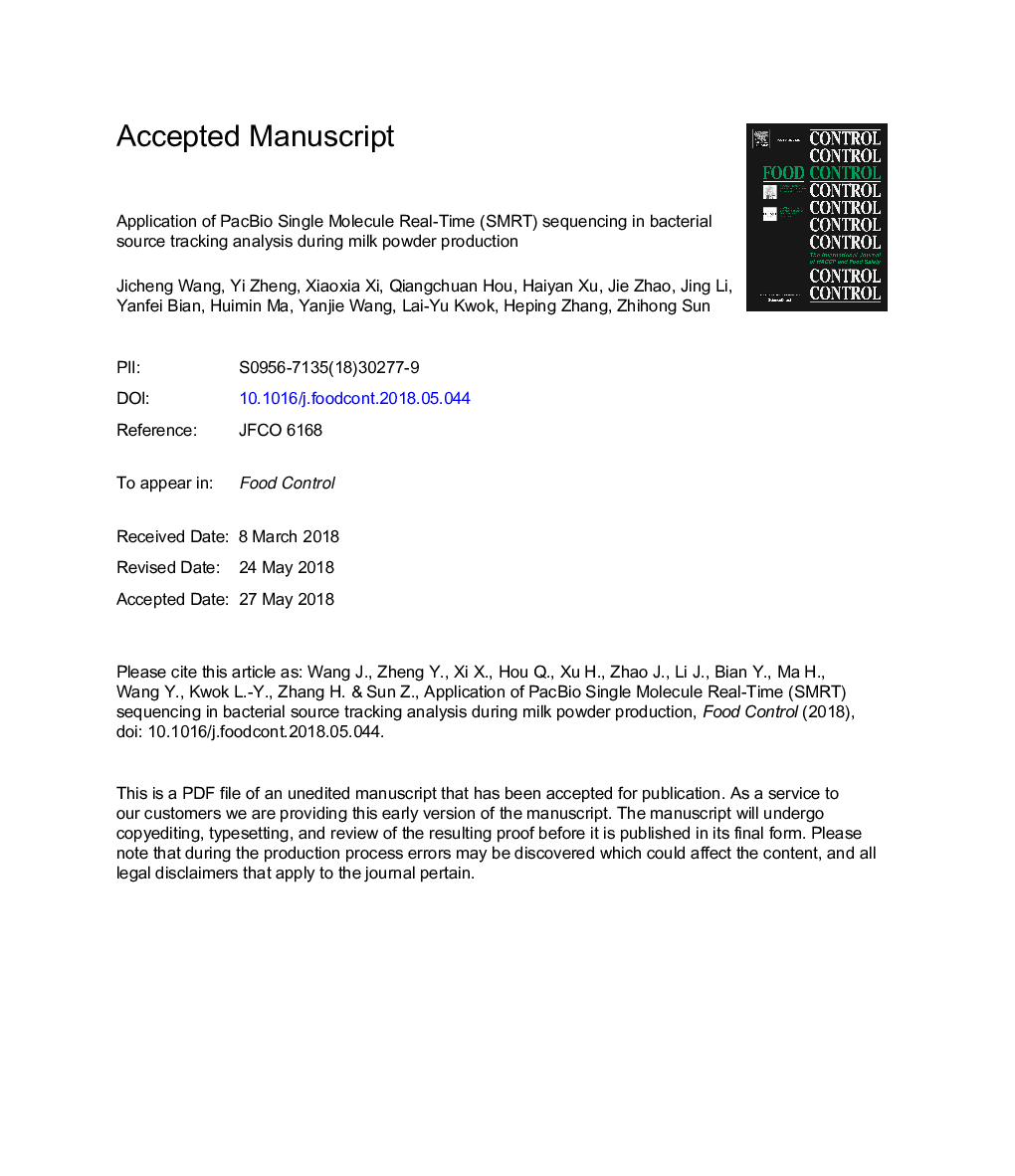| Article ID | Journal | Published Year | Pages | File Type |
|---|---|---|---|---|
| 8887753 | Food Control | 2018 | 34 Pages |
Abstract
This work developed a 16S rRNA-PacBio Single Molecule Real-Time (SMRT) sequencing-based method to identify and track the bacterial community of milk powder (MP) from two kinds of production settings, i.e., small-scale production contained within an in-house environment (minimal milk storage before pasteurization, milk concentration, and spray drying) and a large-scale factory production (prolonged milk storage before direct spray drying). A total of 18 samples were analyzed at the species level. Comparing with the large-scale factory production, only relatively little changes were observed in the bacterial community during the in-house production process, without significant loss in the levels of bioactive minor proteins (namely, lactoferrin, immunoglobulin G, lactoperoxidase, and lysozyme). The two most prevalent species in the in-house production, Bacillus cereus and Bacillus flexus, were likely originated from the raw milk with only small changes in their relative abundances (from 25.97% to 26.40%-28.89% and 27.40%, respectively) throughout the processing (from raw milk to MP). In contrast, large-scale factory production resulted in more obvious variation in the microbial content. This microbial tracking approach is valuable in identifying the contamination source and the specific stage when contamination happens; the implementation of such technique may also enhance food quality assurance systems that are currently used in the dairy industry.
Related Topics
Life Sciences
Agricultural and Biological Sciences
Food Science
Authors
Jicheng Wang, Yi Zheng, Xiaoxia Xi, Qiangchuan Hou, Haiyan Xu, Jie Zhao, Jing Li, Yanfei Bian, Huimin Ma, Yanjie Wang, Lai-Yu Kwok, Heping Zhang, Zhihong Sun,
